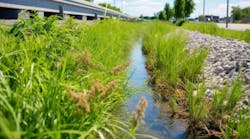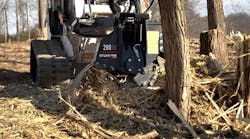Perhaps the two most common goals we discuss in Erosion Control are minimizing erosion and reducing sedimentation, and mostly they go hand in hand. On occasion, however, in order to protect coastlines from erosion, we need to increase sedimentation.
Two adjacent basins on the Louisiana coast have changed in very different ways over the last 90 years. While the Terrebonne Basin has lost over 500 square miles of wetlands since 1932, the Atchafalaya Basin has actually gained 6 square miles of wetlands in the same time period. According to Restore the Mississippi River Delta, an non-profit focused on restoring Louisiana’s coastline, “the key to successful, ongoing land-building in the Atchafalaya Basin is the steady flow of sediment and fresh water the area receives[…] In contrast, there is little freshwater and almost no sediment input to most of the Terrebonne Basin, contributing to continued and severe land loss.”
Wetlands provide numerous benefits to humans and to wildlife. These biologically diverse coastal ecosystems are an important habitat and food-source for many species of plant and animal. Coastal wetlands trap sediment, preventing it from flowing into the ocean, and improve water quality. They also act as sponges to absorb and more evenly distribute flood waters, protecting coastal communities from flooding and erosion.
Comparing the Atchafalaya and Terrebonne basins is an excellent illustration of this last point. According to The Houma Courier, a local newspaper for Terrebonne Parish, LA, a recent study attributes the difference between the size of wetlands in two basins to sedimentation. The Atchafalaya Basin has remained connected the Mississippi River, which provides the wetlands with sediment and fresh water, both of which are vital for wetlands. Wetland plants, the article explains, need new deposits of sediment to keep their roots from becoming too wet. And while coastal wetlands do feature salt-tolerant plants and grasses, many others require fresh water to survive. In contrast to the Atchafalaya Basin, “there is little fresh water and almost no sediment input to most of the Terrebonne Basin, contributing to continued and severe land loss,” Restore the Mississippi River Delta explains.
Residents of Terrebonne Parish have recently passed taxes to construct flood and hurricane protection systems, which, The Courier points out, hasn’t been necessary in cities buffered by the Atchafalaya Basin’s wetlands. “What’s the value of those wetlands? Look at the tax rate over in Terrebonne,” Robert Twilley, executive director of Louisiana Sea Grant and lead researcher of the new study, told The Courier.
Sedimentation is certainly not ideal in all cases or in all situations. But when it comes to coastal wetlands, ensuring that rivers can deliver clean freshwater and sediment to estuaries can protect coastlines and cities from erosion and flooding.
Have you worked with coastal wetlands to prevent erosion? What concerns do you have with positive sedimentation? Send your comments, thoughts, and experiences to [email protected].






